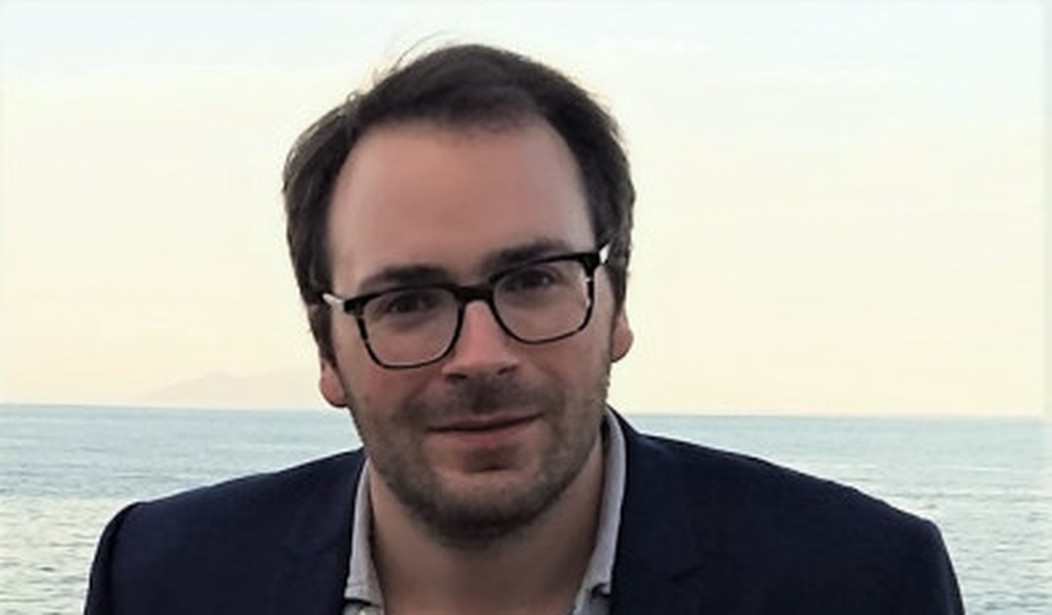In mid-July, I wrote a piece that was popular with Townhall readers headlined: “Shroud of Turin: New Test Concludes 1988 ‘Medieval Hoax’ Dating Was a Fraud.”
The headline reflected the conclusion of French researcher Tristan Casabianca and his team of scientists, who in March published their results in the scholarly journal Archaeometry titled: “Radiocarbon Dating of the Turin Shroud: New Evidence from Raw Data.”
In 2017, Casabianca took legal action to obtain the raw data used in the controversial 1988 radiocarbon dating test on the Shroud of Turin — data that had been deliberately sequestered for three decades. Disputed by scientists from day one, the test results concluded with “95% confidence” that the Shroud — which millions of Christians believe is the authentic burial cloth of Jesus Christ — was dated between 1260 and 1390.
Shroud scientists are optimistic that Casabianca’s breakthrough, obtaining and retesting the 1988 raw data with contrary results, will increase pressure on the Vatican to authorize new comprehensive 21st century Shroud testing.
The following interview was conducted by email from Casabianca’s home in Paris, France.
Myra Adams: What were your expectations and state of mind in 2017 when you first filed legal action against the British Museum (that supervised the three laboratories which had each performed the 1988 dating test) compelling the museum to release the raw test data they had been accused of “hiding” for 29 years?
Tristan Casabianca: My primary interest in studying the Turin Shroud focused more on the historical and philosophical questions and less about the medieval date controversy. But, the dating issue was unavoidable when, in 2017, I presented a Shroud conference paper titled: "Do we really need new evidence and arguments about the Turin Shroud?"
Recommended
Afterward, I realized how much the radiocarbon test’s medieval date conclusion still resonated within the Shroud scientific community and negatively impacted public opinion — despite newer evidence dating the cloth to the First Century. And, since nearly 30 years had passed, I wanted to try to put an end to this dating controversy.
First, I thought: What actions were never taken to obtain the raw data? Thanks to my legal background, the answer was obvious: A request based on the Freedom of Information Act.
MA: You were baptized in 2016, and filed the legal action against the British Museum in 2017. Was there a connection? By trying to obtain the data that could invalidate the 1260 to 1390 Shroud dates, were you seeking physical evidence of the suffering and resurrection of Jesus to help solidify your faith?
TC: There is no direct connection between my baptism and this legal request. But, before I filed, I asked myself if I was truly open-minded about the authenticity of the Turin Shroud. However, if the cloth turned out to be medieval in origin, I would have been surprised, but the dating would not impact my faith in the resurrection.
Christians have no reason to be afraid of the truth and no reason to be afraid of the current scientific process.
MA: Quoting from your L'Homme Nouveau interview (Google translates into English), you stated: “Our work appeared at the end of March on the site of Archaeometry, a magazine published on behalf of the same University of Oxford department that participated in the 1988 dating.”
That said, do you think by publishing your research in their magazine, Oxford was indirectly admitting that their dating the Shroud between 1260 and 1390 with “95% confidence” could be flawed? Is Oxford more open now to exploring your team’s conclusion?
TC: Our research article co-authored by Shroud expert Emanuela Marinelli and statisticians Giuseppe Pernagallo and Professor Benedetto Torrisi — now appears in the October print issue of Archaeometry. But, that does not mean this same Oxford department that tested the linen in 1988, now officially or unofficially supports our conclusions. More intriguing is that since March, the authors and institutions of the Nature article [stunning the world in 1988 after revealing that the Shroud dated between 1260 and 1390] have been invited to reply, and, as of this writing, have not.
In my opinion, Archaeometry posted our research paper because we brought new facts and data on this topic of international significance, and because, to put it simply, “maths don’t lie.” Furthermore, I would guess that it was also easier to accept our research article in the current context of Turin Shroud studies given that since the beginning of the 21st century, most of the Shroud articles published in major peer-reviewed journals provide elements in favor of dating the linen cloth to the First Century.
MA: In case readers are unaware, the Holy See (the governing body of the Roman Catholic Church headquartered at the Vatican) owns the Shroud, and only the Pope can authorize new 21st century testing granting hands-on access. As you know, in August, I wrote an open letter to Pope Francis, and cited your research, about how the 1260 – 1390 Shroud dates maligned the cloth since the announcement of the 1988 test results.
Tristan, after your research first posted in March, have you seen any positive signs that the Holy See is leaning toward authorizing new testing?
TC: No, but your letter to the Pope and interviews like this can help apply pressure. In May 2019, the University of Catania (Sicily) organized an important conference to discuss our findings with the possibility of new tests in the next few years. Surely the Holy See was watching.
The Shroud’s next public exposition — rumored to be in 2025 — would provide the perfect platform for new testing. In my opinion, 30 years ago, the main testing error was a deliberative choice not to include radiocarbon dating as part of a series of multidisciplinary tests, with a robust, transparent and respected protocol. The decision to only authorize radiocarbon dating led to the dating failure, which for three decades stood as “fact” and defamed the Shroud as a “medieval fake.”
MA: Do you think that the world in general fears that the Shroud could be the authentic burial cloth of Jesus? Therefore, isn’t it easier for the secular media to continue the narrative that “the Shroud was created by a medieval artist”?
TC: I am highly confident that in the next few years, the failure of the Turin Shroud radiocarbon dating will largely be admitted by scientists. Those changes take some time, even when well supported by data and sound scientific reasoning.
Most of the scholars, media, and general public in our Western societies accept the idea that there can be no sound argument in favor of the existence of God or the resurrection of Jesus. It is a deep belief most of the time accepted without much critical thinking. I never expected that our findings would contribute to a sudden and dramatic change in the narrative of mainstream media or people’s worldview. However, nowadays, a convincing historical case for Jesus’s resurrection can be made, and, given our current knowledge of the artifact, the Shroud could be part of this argument. Anyway, studies on the Turin Shroud are more than ever part of the continued debate about the relationship between science and religion, faith and reason.
MA: Tristan, thanks for participating in this interview.
On Jan. 18, 2020, Tristan Casabianca will be visiting the U.S. for the first time since his research team debunked the conclusions of the 1988 radiocarbon dating test. Tristan, along with four world-renown Shroud experts will speak at a Shroud event hosted by the Museum of the Bible in Washington D.C. titled, “Shroud of Turin: Explore the Mystery.” Register here.

























Join the conversation as a VIP Member